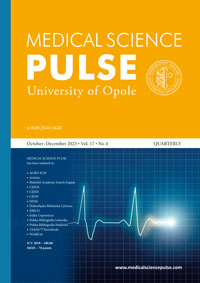Antibiotic resistance in clinical isolates of extended spectrum beta-lactamase-producing and non-producing Escherichia coli obtained from urine cultures of urinary tract infection patients
Antibiotic resistance in clinical isolates of extended spectrum beta-lactamase-producing
and non-producing Escherichia coli obtained from urine cultures of urinary tract infection patients
Author(s): María Guadalupe Benítez Vergara, María Fernanda Cruz Rosas, Pablo Gustavo Rojas García, Rodolfo García Contreras, Gabriel Martínez Gonzalez, Jorge Angel Almeida VillegasSubject(s): Health and medicine and law, Welfare services
Published by: Uniwersytet Opolski
Keywords: resistance; antibiotics; E coli; sensitivity; ESBL
Summary/Abstract: Background: Escherichia coli is part of the normal human biota, but under certain conditions, it is primarily responsible for diseases such as gastrointestinal and urinary tract infections. Enterobacteriaceae, such as Escherichia, are extended-spectrum beta-lactamase (ESBL) producers, which makes their treatment difficult due to a high rate of antibiotic resistance.Aim of the study: Identify resistance patterns against various antibiotics in ESBL-producing and non-producing E. coli in urinary infections in a population of the Toluca Valley, Mexico.Material and methods: Samples (n = 155) were collected from patients with a suspected urinary tract infection without exclusion criteria such as age or gender. Automated equipment identified the etiological agent and performed sensitivity tests, while ESBL determination employed the double disc technique.Results: The study used 35 E. coli strains, of which 45.72 % produce ESBLs and show 100 % resistance to beta-lactams and high resistance to quinolones and tetracycline, ranging from 70 to 100 %. On the other hand, the resistance displayed by non-ESBL-producing strains varied for beta-lactams and other antibiotics.Conclusion: Treatment for urinary tract infections has become increasingly difficult due to the high rate of antibiotic resistance, mainly ESBL-producing strains such as the E coli used in the present study, which demonstrated high resistance rates to different antibiotics used in clinical practice.
Journal: Medical Science Pulse
- Issue Year: 17/2023
- Issue No: 4
- Page Range: 10-15
- Page Count: 6
- Language: English

